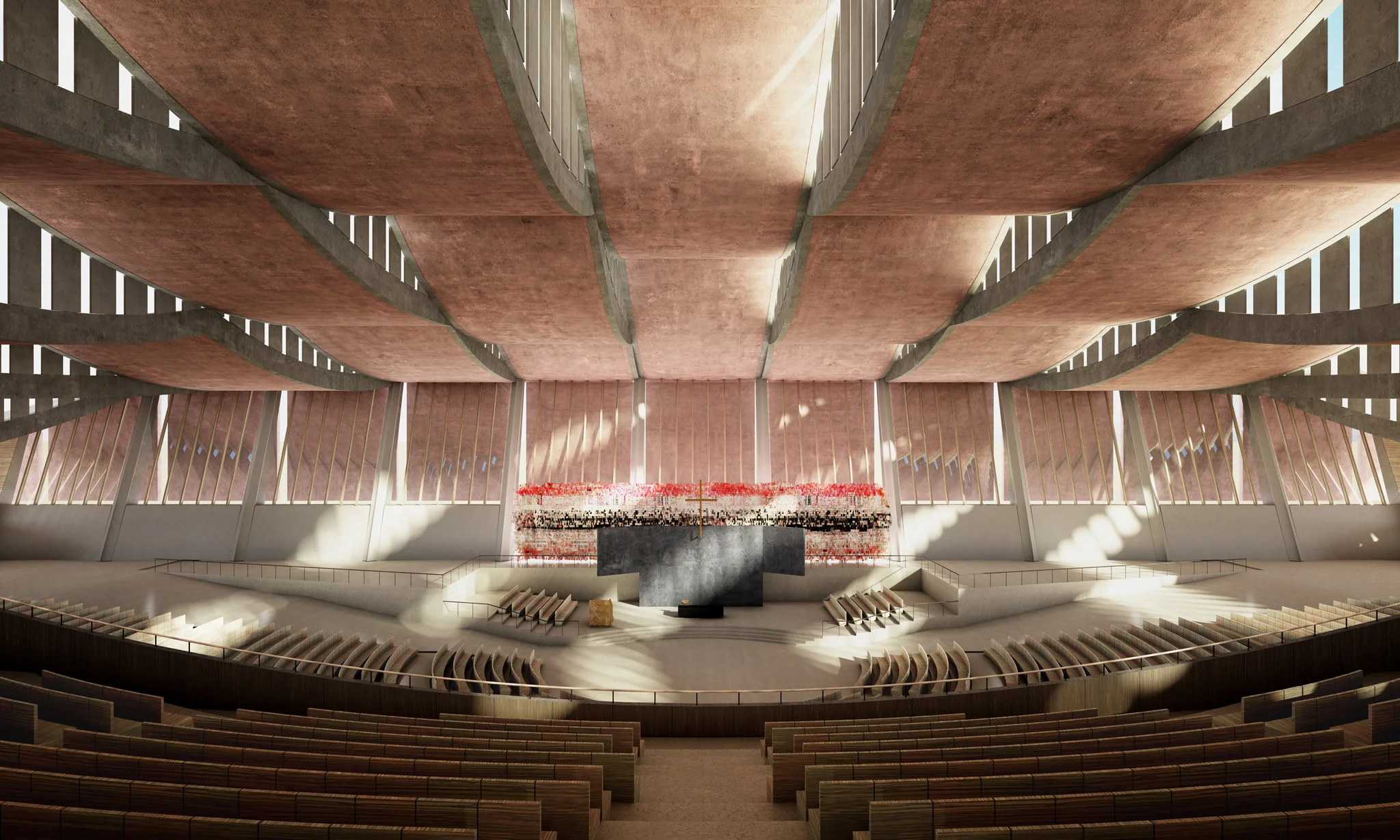Making Memory at the Design Museum pulls down old ideas of the monument to build new notions of shared spaces
Sir David Adjaye OBE’s latest exhibition at London’s Design Museum asks us to consider what constitutes a monument or memorial today. Making Memory is a provocation that hopes to elicit a collective questioning of imperial ideas of such structures that sanctify a single vision, individual or event and instead view them as an opportunity to contemplate both personal and societal experiences. How can architecture help us to better engage with spaces – and each other - in new and open ways?
The exhibition includes seven projects chosen by the much-lauded British Ghanaian architect that thread this form of inquiry together, one that has shaped his practice for over a decade. They include relatively small endeavours – what Adjaye calls “monuments of the every day” - such as the Gwangju River Reading Room. This pavilion was created in collaboration with author Taiye Selasi to remember the 200 students who died in the Gwangju Massacre in 1980 and to encourage the city’s citizens to discover a curation of books about equality and human rights.
On the other end of the scale is the award-winning Smithsonian National Museum of African American History and Culture in Washington D.C. This three-tiered bronze building, or corona, symbolises the African American influence upon US identity and takes inspiration for its core form from Yoruba sculptures. Meanwhile the ironwork on its façade honours the African slaves of the southern states who were adroit at this form of craft, and the bas reliefs of the Royal Palace of Benin.
Some of the other projects presented are yet to be realised such as the UK Holocaust Memorial and Learning Centre, which will transform a landscape in central London into an immersive journey through which visitors can reflect upon persecuted peoples. The proposed Coretta Scott King and Martin Luther King Jr. Memorial in Boston, the city where the couple met, is envisioned to be a black stone overlook and series of sculptures engraved with their speeches, most notably King’s last, ‘I’ve Been to the Mountaintop’. And the National Cathedral of Ghana in Accra – due to be complete by 2024 – will bring Christianity and local beliefs together into a multi-functional auditorium where up to 15,000 people can gather for celebration and mourning. Adjaye took his cues from Akan stools, Adinkra symbols, ceremonial umbrellas and the traditions of tabernacles to design the cathedral’s canopy-like structure.
Each project tells its own story about times past while promising to help shape 21st century cultures and forge dynamic pathways toward future understandings. Here Adjaye talks about some of the underlying ideas of the show.
On the role of monuments today…
“The monument is no longer a representation, it is an experience of time and place that is available to everyone. Whether it’s for a nation, a race, a community, or a person, it is really used as a device to talk about the many things facing people across the planet. Democratisation does not mean that monuments cease to be relevant; it requires the monument to be transformed, so that it has an inbuilt openness and can be approached and understood from many points of view.”
On how architecture codifies memory…
“Architecture operates in the same way as music, literature or art does in terms of codifying memory. When I say memory I don’t mean literal memory, I mean the aspirations and nature of the time. Architecture has been used in the service of capturing those ideas, and used more directionally in terms of creating imperial images or epochs. I think that we now live in a post-structuralist world where that kind of narrative is no longer interesting so there’s a moment to remake all architecture again. That’s how ambitious it is. Let’s create a world we like.”
On the current restitution debate between Europe and Africa…
“I applaud Macron and the French government for addressing the issue. It’s a very enlightened position to understand that if there is stability in the country where an object came from, then there should be an opportunity and desire to return it. It’s a moment to talk about the shared experience of both worlds because by taking it, those worlds have interacted and now are inextricably bound. So by returning it, there is a restitution that happens emotionally and psychology and a remaking of a new, dual relationship. And this remaking of structures talks about the empowerment of the return and edifies that community in a profound way. It’s about understanding how physical objects impart a provenance in their spaces, and can work as a part of architecture to inform the evolution of the country it was taken to. It’s a powerful creative moment.”
On the future of designing monuments…
“The first thing that is happening is that the monument is becoming more special. The monument before had a ritual quality in terms of formal remembrance but I think there is a new quality, the ritual of the object in every day life. People can go whenever they like to engage with it, rather than wait for somebody to atone on top of it, and then to use that to make their own reflections. But on top of that is also a content narrative appearing in the way that different voices might start to be dissolved into the space, and sometimes those will conflict with what the formal nature and aspiration might be… The architect has a crazy job of having to at once serve a client and a brief while also being responsible to society and the history of architecture as a built form. So there is this duality that is important to remember because it keeps you in check. You are serving a bigger idea.”
David Adjaye: Making Memory is on view until 6 May 2019 at The Design Museum, London
Visit The Design Museum
Published on 09/02/2019









